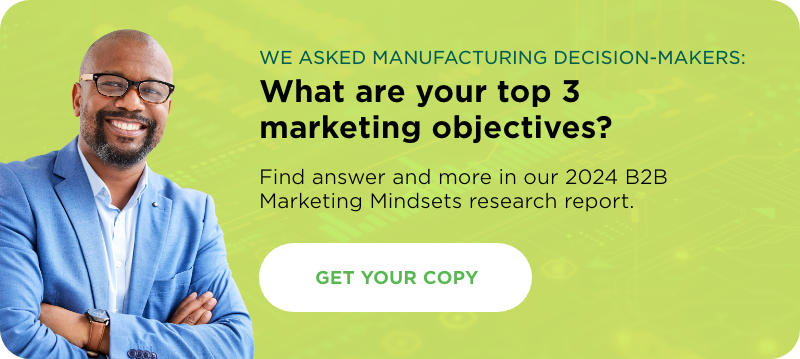Struggling to grow your newsletter subscriptions? Is your offer strong enough?
Email newsletters can be a great boon to your business. But they can also be a frustrating and discouraging resource to manage. If you’ve been working with them long enough and have managed to grow a large and loyal subscriber base, they can be an incredibly valuable resource. They can increase your ability to engage with your base and promote your business. They can also help to gather meaningful data on their preferences.
However, if you’re stuck in the doldrums, with a very small list and small subscription growth, you may be left wondering whether an email newsletter is worth your time at all. We’d all like to think that our newsletters are so inherently useful, that anyone who sees our subscription button will be drawn to it like moths to a flame.

If only growing newsletter subscribers was this easy.
But this is rarely the case. Yes, there are reasons why some people prefer subscribing to newsletters over other forms of content. Most of us are more likely to check our email regularly throughout the day, and may find it more convenient to receive your updates there. But at the end of the day, we all subscribe because we expect to get something in return.
So if your newsletter subscriptions aren’t coming at the rate you’d expect, take a step back and review your offer. Who is your target demographic, what might they want from you, and are you making the newsletter that would best appeal to that target audience? To answer some of these questions, let’s look at some of the top reasons someone might want to subscribe to your newsletter.
They’re on the lookout for deals or promotions.
This one can be easy to land, but hard to maintain. Coupons are nice, but it’s easy to be overwhelmed by them. Plus, the more you offer your customers coupons, the more they will begin to expect everything to be always on sale. You can still use this to your advantage, but it may help to combine your promotional email with another kind of value offer—lake an early look at upcoming products, or items/service packages only offered to subscribers. In this instance, a “deal” could mean a discount, but it could also mean exclusivity.
They hope to learn something from you and stay informed.
My favorite subscriptions are ones that keep me updated on industry news or provide some kind of educational value. These can come in the form of “get our blog posts in your inbox.” But they can also be curated content from elsewhere on the web, or an editor’s perspective on a particular topic. News outlets are a good example of how to run these kinds of subscriptions. Many outlets have so many stories running a day that it’s useful to readers to have the highlights delivered in their inbox. They’re also a good example of how to segment your email lists to better target your audience.
They don’t want to miss an update or news item.
If you run a non-profit or are launching a new product, you can benefit from a newsletter as a way of keeping your base up-to-date on progress. Non-profits in particular can benefit from this, as their blog and newsletter may target different audiences. The blog may be intended to convert readers to the cause, or provide more information on the topic at hand. On the other hand, the newsletter is for supporters, and those who already believe in the cause.
Similarly, those who are launching a new product may use their website for promotion. But their newsletter is to update those who have put in preorders, to let them know about product development, or more upcoming projects.
They find you hilarious or want to be entertained.
This is similar to those who want to be educated, but with a different kind of value. I may view an educational newsletter as something which would help me with my job. But I would like to comedy or entertainment as a useful break in a work day, or as something to consume over the weekend. A newsletter could offer to send me a daily update right at noon, to coincide with my lunch break, or over the weekend.
Give your visitors a reason to subscribe.
The point is, no one gives you their email just to be generous. They want to know why they should hand over a valuable piece of personal information. You may know why their email address is important to you. But if you haven’t shown why the exchange will be worthwhile to them, your newsletter subscriptions are going to be slow in coming.
So take a step back to think about what it is you have to offer. Then make your pitch compelling based on what you think will provide the most value to your subscribers. Here’s what you should include when you ask for a subscription:
- A description your newsletter. This can be a simple phrase such as “get our blogs delivered to your inbox,” or “let us send you our weekly deal,” or a promise of exclusive content.
- The frequency of emails. Make a promise about how frequently you plan to be in their inbox. Include this in your description as “daily” or “weekly” or “biweekly.”
- An assurance of privacy. Let subscribers know how you plan to use their email. “We promise not to share your email with anyone,” is a simple line.
Once you have all that taken care of, all you have to do is follow through. Being consistent in delivery and following through on the content you promised are both key aspects of a well-run newsletter. If you take advantage of your newsletter subscriptions to spam your list, you damage customer loyalty and risk incurring penalties such as blacklisting. And if you don’t manage to send your emails according to your timeline, your subscribers may forget they ever signed up to begin with. Don’t leave subscribers wondering why they gave you their email. Show them why your newsletter has value, and deliver on your promises.






